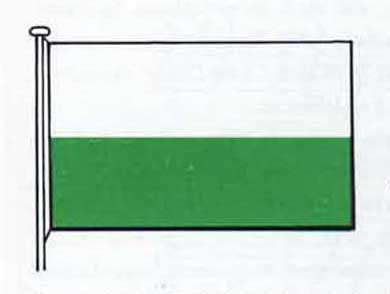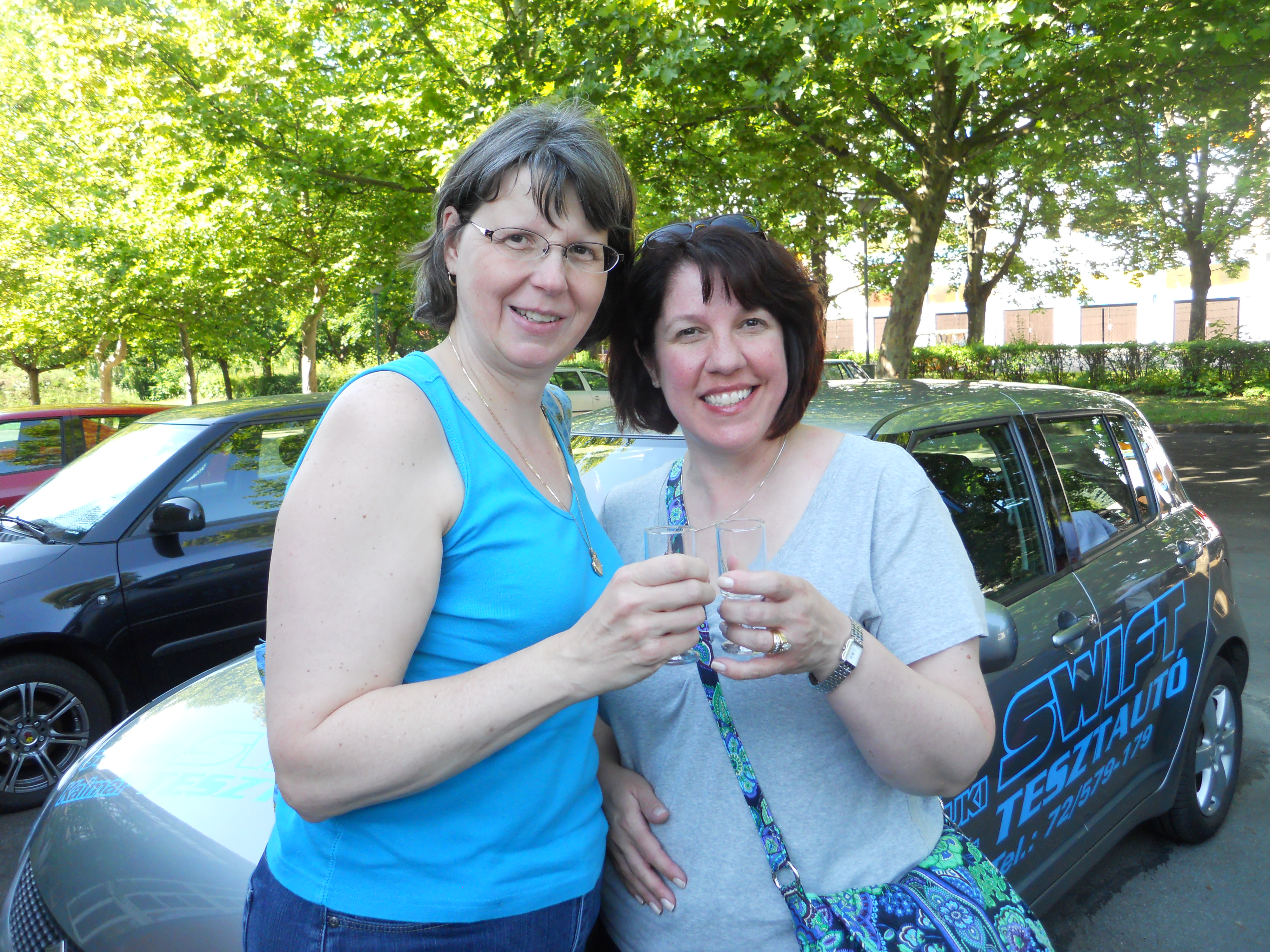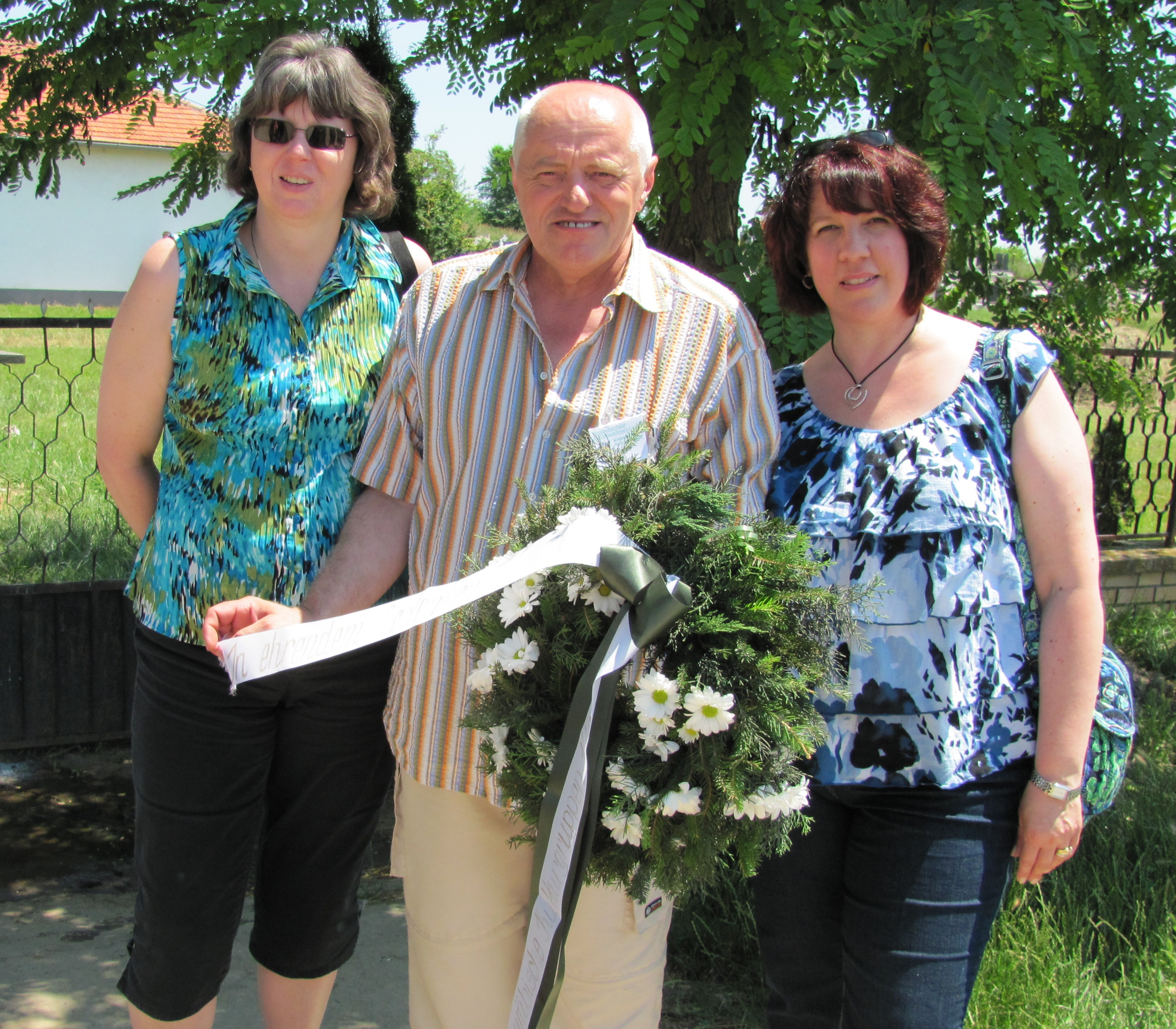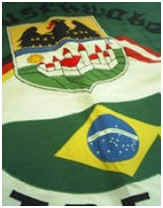|

  LANDESVERBAND USA
LANDESVERBAND USA
 
 NEWSLETTER AND MAGAZINE
NEWSLETTER AND MAGAZINE 
DONAUSCHWABEN
OVERSEAS

 12/18/11 12/18/11

October November December 2011
Volume 6 Number 4



|



VISITING
AUTHOR/EDITOR ARTICLE
DECEMBER
2011

|
Jugendgruppe
Leaders |
|
Travel
to Hungary
|
By:
Maria
Toth

Forwarded
by Chicago Donauschwaben

Jugendleiterin Rose Hauer and I departed Chicago on
June 13 to attend the second Donauschwaben Welttreffen
(World Conference).
Individuals and groups from throughout Europe,
Brazil, Canada, and the USA (Chicago Donauschwaben, Chicago
American Aid Society, Cincinnati, Detroit, St. Louis) would
meet in Harkány, Hungary from June 16 through June 28.
We attended workshops, lectures, and toured southern
Hungary (Baranya County) in order to learn more about our
Donauschwaben heritage and preserve our unique traditions
for future generations.
Along the way, we built friendships and experienced
moments that we would never forget.
Rose and I arrived in Harkány, Hungary on June 16,
after a three and a half hour bus ride by coach bus from the
Budapest airport. We
met Stefan Ihas, the representative for the Donauschwaben
youth groups in Europe, as well as other individuals from
all over the world who had come to represent their clubs and
take part in this second World Conference.
Our group numbered about 65.
While in Harkány, Rose and I stayed at “Pension
Otto” a charming bed and breakfast located in the heart of
town. We were
within walking distance of the famous mineral spa and pools,
small cafés, restaurants, ice cream shops, and the flea
market. Harkány
is a small town of about 4,000, located in southern
Transdanubia, in Baranya County (“Branau” in German).
Baranya County has the largest number of minorities
in Hungary (more than twice the country average) – 34% of
the German minority lives there.
We were able to speak German in many of the shops and
restaurants. While
in Hungary, we were videotaped and some members of our group
were interviewed by a Hungarian television station (MTV videótár).
Each week, this station produces half-hour “video
magazine” programs in the German language for its viewers.
The programs are close-captioned in Hungarian as
well. To view
the program about our trip, see:
http://videotar.mtv.hu/Videok/2011/07/19/14/
Unser_Bildschirm_2011_julius_19_.aspx
We were taught traditional folk dances in dance
workshops led by Judit Mausz, Eva Treitz from the Babarc
Tanzgruppe, and Peter Schweininger from the Saar Tanzgruppe.
In addition, we sang and learned new songs from the
Wemender Quartett.
One of our group’s first outings was to the
Schwabenball in Görcsöndoboka, also known by its German
name of Ketsching. After
a meeting and photo opportunity with the town’s Mayor, we
strolled around the streets of this small farming community
before returning for dinner, various singing and dancing
performances, and a night of dancing to a German Blaskapelle (brass band). Many
of the local women were dressed in their finest Trachten
(traditional costumes).
They wore long-sleeved white embroidered blouses
topped with black vests and red fringed Halstücher (shawls). Their
knife-pleated silk skirts reached down to their mid-calves
and were worn over four very stiffly starched Unterröcke
(petticoats). A
few of the older women wore black hand-knit Patschker
(slippers) which were embroidered with small flowers and red
trim.
We also drove to Mohács (Mohatsch) on the Danube
River. Our group
of Donauschwaben sent its greetings to the “alte Heimat”
as a wreath was lowered into the Danube.
We all watched as it floated downstream.
From there, we drove on to Babarc.
Our group was invited to the 30th
Anniversary celebration of the Babarc (Bawarz) Tanzgruppe.
We attended Mass in the town’s church, celebrated
by Pfarrer Peter Zillich.
The members of the choir were occasionally
accompanied by Pfarrer Zillich on his accordion.
Under the direction of Eva Treitz, the Babarc
Tanzgruppe performed their most popular folk dances for the
large crowd.
We attended lectures on the history of the
Donauschwaben by Franz Heilig and the Memorial Monuments
Erected in the Extermination Camps of the Former Yugoslavia
by Josef Jerger. Herr
Jerger reminded us that the importance of these monuments is
two-fold: to
honor those who died in the camps; and to raise awareness of
the current residents of those towns so that they know that
the Donauschwaben once inhabited their lands and of the
atrocities that took place against them.
We learned that the memorial monuments were built
solely with private funds, costing between $14,000 and
$17,000 to erect each one.
Each morning, one of the organizers, Anna Fernbach,
would read her Wort
des Tages to get the group in the proper mind-set for
the day’s activities.
On the morning of June 22, Anna read a poem about the
Heimat and the
unspeakable tragedies that occurred to the Donauschwaben in
the labor camps. We
then boarded our bus and drove from Hungary through a
portion of Croatia into Serbia until we reached the Massenfriedhof
(mass graves) in Gakowa, Serbia.
This was one of Tito’s worst concentration camps;
over 8,000 innocent men, women, and children lost their
lives in this forced labor camp and are buried together in a
mass grave. This
part of our journey had particular meaning for me.
My father was held in this camp as a young boy along
with his Oma and Opa. His
grandparents died of starvation and are among the thousands
buried there. Our
Donauschwaben group placed a wreath at the foot of the
towering memorial cross and recited prayers in German for
those who lost their lives at this camp.
Our group also went to visit a now-retired Meister
Blaufärber (master blue fabric-dyeing craftsman).
János Sárdi lives in a town called Nagynyárád (Groβnarad).
He is known throughout southern Hungary for his
beautiful fabrics which are used in many restaurants, wine
cellars, and private homes.
Herr Sárdi is 91 years old and is one of a dying
breed – his craft is no longer taught or practiced.
He welcomed us into his home studio where he
explained the intricacies of his craft and led us on a tour
of his shop. He
has a room filled with molds (copper pieces which he
meticulously nailed and imbedded into a wooden base).
These molds were used in a fashion similar to rubber
stamping. He
demonstrated by dipping the mold into a colored wax-based
resin and then “stamped” the image onto white cotton
fabric and allowed it to dry.
The fabric is then dipped numerous times into deep
vats of indigo-blue liquid dye.
Once the fabric is dry, a chemical solution is used
to remove the wax-based resin.
The area where the wax impression formerly was is now
white against the dark blue fabric.
The yards of fabric that were dyed are stretched and
heated on large roller machines, giving them a glossy
finish. This
blue fabric was sewn into clothing, aprons, table coverings,
napkins, curtains, and accent pieces.
We also attended workshops on Donauschwaben healing
methods and superstitions; learned to knot the silk fringe
on the bottom of traditional shawls (Franzen
knüpfen); and created Kukuruz
Puppen (cornhusk dolls).
My companions and I also witnessed a re-creation of a
schwowische Hochzeit
(Donauschwaben Wedding) as it would have taken place during
my Oma’s time. Our
group watched older Donauschwaben ladies of the town of Véménd
(Wemend) dress a young woman from the Wemend Tanzgruppe in a
Hochzeitstracht
(Wedding costume). Accompanied
by a brass band, we marched from the bride’s house to the
town’s church and then to the dance hall, where we had a
traditional dinner of Sarma
(stuffed cabbage) and watched folk dancing and a
demonstration of how the wedding gifts would have been
presented to the newly married “couple”.
One of our side trips took us to the city of Pécs (Fünfkirchen).
Pécs was designated Europe’s Cultural Capital for
the year 2010. We
were fortunate to have a local serve as our tour guide; he
took us on a walking tour of the city, sharing many
interesting pieces of trivia and history with us.
We learned that the Ottoman Turks ruled Hungary for
150 years and that Pécs was one of their main cities.
There are still many remnants of the Turkish empire
to be seen. A
former Moschee
(mosque) has been renovated into a Christian church, with
most of the Muslim architecture still visible.
Another day trip took us to the town of Liptód.
We were greeted with Schnaps, wine, chamomile tea,
and pans of freshly-baked Zwiebelbrot (onion bread). Here,
schwowisch-speaking men and women showed us how to make Saueres
(a hearty soup using many different parts of the butchered
pig), Ungarische
Bratwurst (Hungarian sausage), Sarma,
and three kinds of Strudel
(apple, cheese, and cherry).
We were encouraged to help out in the kitchen, walk
through the vineyards, explore the town, and climb up the
steep hills to Herr Markesz’ private wine cellar (and
sample some of the region’s finest wines).
The view from his wine cellar to the town below was
breath-taking!
This trip was an unforgettable learning experience
for Rose and me.
The culture and heritage of the Donauschwaben people
is unique and I am proud of my ancestry.
The chance to step back in time and experience life
as it was for my forebearers living in southern Hungary (the
maternal side of my family are from Tolna County – Tolnau Bezirk) is one that I will always treasure.
There was a nice balance to the amount of workshops,
lectures, and tours. The
presenters at the dancing and singing workshops and the
various lectures were outstanding!
They wholeheartedly shared their expertise with us,
were enthusiastic, and always happy to answer any questions.
The second World Conference was a success and helped
me to very concretely visualize so many of the stories I
have heard from my grandparents and parents over the years.
Stepping back in time to experience the old Heimat
was a privilege. I
have personally shared my experiences with my three
daughters and Rose and I have put together a visual
presentation for our Vorstand, Jugendgruppe, and
Frauengruppe. Although
they were not able to join us, we want them to be able to
share in our multi-faceted experiences.
Many thanks to our Vorstand
and the Frauengruppe for their financial support; and
to the Donauschwaben Weltdachverband for encouraging members
of their various cultural groups to partake of this second
World Conference!

|

|
 |
| Rose Hauer &
Maria Toth |
Rose
Hauer, Stefan Ihas, and Maria Toth
Wreath
placed at the Gakowa Massenfriedhof Memorial |

|

|



VISITING
AUTHOR/EDITOR ARTICLE
OCTOBER
2011

|
Üdvözlet
Harkany, Magyarorszag
|
|
Erinnerung
aus Harkany, Ungarn
|
Forwarded
by Carpathia Donauschwaben

In
June, Rob and I had the opportunity to attend the
Welttreffen Donauschwäbischer Kulturgruppen, arranged by
the Weltdachverband der Donauschwaben e.V. Under the motto:
DONAUSCHWABEN Zukunft gestalten, Tradition gewahren,
Weltweit zuhause Representatives from USA, Germany, Austria,
Brazil, Canada, and Hungary, met to learn dances, songs,
crafts, traditions, beliefs, and history - from the ‘Ulmer
Schachtel’ up to the current, worldwide existence of the
Donauschwaben.
Our
‘home’ for 2 weeks was in the town of Harkany, south of
Pecs (known to many of you as (Fünfkirchen) in southern
Hungary – the Baranya region. The location was perfect to
learn about and experience Donauschwaben life. The small
towns we visited are still as they were 100 years ago... the
layout of the town, houses, yards, and fields, but now they
also have modern conveniences, including a satellite dish on
the roof!
Everyone
spoke Schwowisch, they all have a clubhouse/hall for their
dances, German school, and Jugend/Kulturgruppen like we do.
Also, they are able to keep the old customs and practices
better than we could; they did not have to move to new
countries with different cultures and try to recreate ‘die
Heimat’…it has been around them all along. That’s what
made it so interesting to me.
We
spent an afternoon with the Babarc Tanzgruppe, celebrating
their 30th Anniversary. The Kulturgruppe from the town of
Wemend put on a traditional Schwowische Hochzeit (wedding)
starting with dressing the bride, then the procession
through the town from the groom’s house, to the bride’s
and on to the church, all accompanied by the band. A lively
reception in evening had more dancing.
There
was a Schwabenball; a visit to a wine cellar with wine
tasting – it is the wine region of Hungary; a
demonstration from the very last Blaufärber. I didn’t
know what this was until I saw the designed blue cloth. This
man was the last to dye the cloth by hand, he has now
retired and the art has died out.
The
last Sunday was spent in the town of Liptod. When we arrived
a fire was roaring out of the stone ovens. The morning began
by butchering a pig, making wurst, Sarma, and our lunch –
“Sau’res” (not 100% sure what all went in there, but
it did taste good).
The
“gezogene Strudl” was made just like Oma used to make
– the dough was pulled over the table - but these were
baked in the stone ovens that had been cleaned of the ash
and were hot enough to bake bread until the next morning. An
afternoon walk took us up the hill behind the house to the
family wine cellar. And for an old meets new scenario: in
this building there were several computers from where I was
able to send e mails to the Jugendgruppe!
No
Donauschwaben Treffen would be complete without a
remembrance of those whose lives were lost. A commemorative
wreath was placed in the Donau in the city of Mohacs and
later in the week we visited the memorial marker (Denkmal)
in the town of Gakowo. The memorial stands behind the
current Serbien cemetery. It is a large metal cross with a
few generic, politically correct phrases inscribed below. It
may not mean much to the casual passer-by, but it does
strike a chord in the heart of a Schwob. It’s been a part
of our heritage starting with the generation that lived
through it and will be for every generation thereafter.
A
farewell evening was held at the Fülemüle Csarda. We have
many pictures of the trip and thanks to new friends and the
internet, there are even more pictures. Look for some new
dances and songs we will pass on to the Jugend and
Kindergruppen. If I’ve sparked your interest or jogged a
memory I’d be very happy to talk to you about it! It was
truly a great and awesome experience!
Karin
Schwalbe

 |
Babarc
Tanzgruppe with their
church
in background.
|
|
From
the wedding
Dressing
the bride, who is in
black
with the headpiece.
|
 |
 |
Rob
& Karin
Schwalbe in Pecs,
Hungary
|
| A
church in Liptod |
 |
|

|

|



VISITING
AUTHOR/EDITOR ARTICLE
OCTOBER
2011

2012
Sechzig Jahre Donauschwaben in Brasilien

Forwarded
by Chicago Donauschwaben

Die Donauschwaben in Brasilien feiern im nächsten Jahr ihr
sechzigjähriges Einwanderungsjubiläum nach Entre Rios.
Dazu sind Landsleute, Verwandte und Bekannte herzlich
eingeladen. Unter dem Motto „Innovation“ bieten die
Landsleute in Entre Rios den Besuchern aus der ganzen Welt
vom 4. bis 8. Januar 201 2 einFestprogramm. Das Festzelt
wird vor dem Sitz der Genossenschaft Agraria in Vitoria in
Entre Rios aufgebaut. Auf dem Programm stehen unter anderem
kulturelle Darbietungen, eine Musikshow, kulinarische
Spezialitäten, Tanzabende, ein Festumzug mit
Maschinenausstellung und vieles mehr. Die Einladung zur
Teilnahme am Jubiläum geht an alle Vereine mit der Bitte um
Bekanntgabe unter ihren Mitgliedern. Die Einladung mit dem
offiziellen Festprogramm folgt.Entre Rios freut sich mit
Ihnen dieses Jubiläum feiern zu dürfen.
JORGE
KARL, Präsident, PAUL ILLICH, Vizepräsident
Kontakt:
Cooperativa Agraria Agroindustrial, Praca Nova Patria
Vitoria Entre Rios, Guarapuava PR
Brasil
851 39-400, Fax 00 55 42 3625 8365, E-Mail:andrea@agraria.com.br

|
Das
Logo der
"Cooperativa
Agrária"
|
 |
 |
Das
Wappen der
Banater
Schwaben
in
Eintracht mit der
brasilinischen
Flagge
|

|

|



VISITING
AUTHOR/EDITOR ARTICLE
OCTOBER
2011

| STRUDELFEST |
| in
BACKA PALANKA |
| SERBIA |

Forwarded
From Trenton Donauschwaben

Trenton
Club friend, Stefan Guzvica, of Backa Palanka, reports
that the Palanka Donauschwaben Society recently held
it‘s 3rd Annual Strudelfest (see pictures).
They are also organizing a cleanup day in September to
clean the entire yard of the former Burgerschule (where
the City Museum is located today).
Danke,
Stefan


|


|